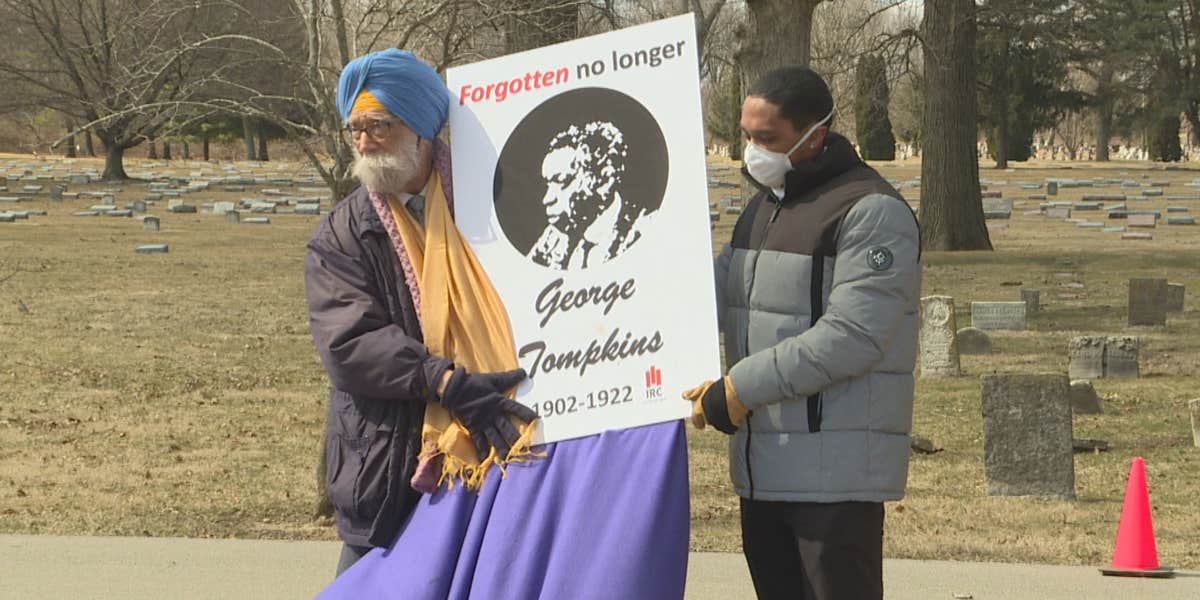Death Certificate Of Indiana Lyching Victim Finally Changed From Suicide To Homicide 100 Years Later
He was found with his hands tied behind his back.
 YouTube
YouTube This month a hundred years ago, a 19-year-old man was lynched in Indianapolis, and he received injustice both in life and death.
That is because, until now, his death had been marked as a suicide.
But now this Indiana community wants to set the record straight and give this young man, George Tompkins, a tiny bit of that justice and respect he deserved, by putting an end to the lies on his death certificate.
The century-old Indiana lynching case has finally been acknowledged as homicide.
The Indiana Remembrance Coalition, according to the Daily Mail, has been fighting to set the record straight about Tompkins’ murder since last year.
RELATED: Las Vegas Police Officer Charged With Robbing Casino Using Department-Issued Gun
But it was only this Saturday that the official cause of death was changed from “suicide” to “homicide.”
George Tompkins had been without justice for a long time.
Tompkins was originally found dead on March 16, 1922, in the woods at Cold Spring and Lafayette roads.
He was found hanging — with his hands tied together behind his back as well.
Strangely enough, despite the falsely marked cause of death, it seemed that even the coroner who examined him at the time was aware that it had been a homicidal lynching.
According to Dr. Rebecca Shrum, who is an associate professor of history and director of public history programs at IUPU, the county coroner said that “the man could not have hanged himself.”
And yet, the official cause of death still read suicide, despite the statement.
This only made it all the more clear that the ruling was based on little physical evidence, but something else entirely.
By bringing this one man justice, they also hope to start a dialogue.
Karen Christensen of the Indiana Remembrance Coalition was a key figure in bringing justice to Tompkins.
But she shared that cases like this are not to be viewed as isolated from other cases of racism and violence, even in modern day, and she said, “We are just here trying to bring justice, to the extent that we can, but also to start a dialogue.”
Her and the Indiana Remembrance Coalition she represents want to stress the importance of learning from our own history.
Christensen said, “It might look a little differently but things like this happen today. And so, if we don't understand what our history is about, we will repeat, and we are repeating it. And therefore, we want to talk about this so we can stop the racial violence.”
As reported by WTHR, although people have been trying to pass an anti-lynching bill for over a hundred years, the Senate finally approved one this week that would officially make lynching a federal crime.
A century later, the community of Indianapolis paid their respects to Tompkins.
A new headstone has been added to Floral Park Cemetery in Indianapolis to honor his life and the justice that it took so long to bring him.
The headstone was added Saturday morning, soon following came dozens of visitors paying their respects, leaving many pink carnations on top of the stone out of respect for Tompkins’ life that ended one century earlier.
“In 1922, George Tompkins did not receive justice, neither in life nor in death,” said the mayor of Indianapolis, Joe Hogsett.
Finally, it seems that everyone involved in making this change happen is glad to be part of that small act of justice.
Marion County Deputy Chief Coroner Alfie McGinty, now with an accurate death certificate identifying the murder, said, “We are proud to be a part of this history some 100 years later and we will remember George Tompkins.”
Amanda Hartmann is a writer and editorial intern at YourTango who writes on various topics subjects such as news and entertainments.
